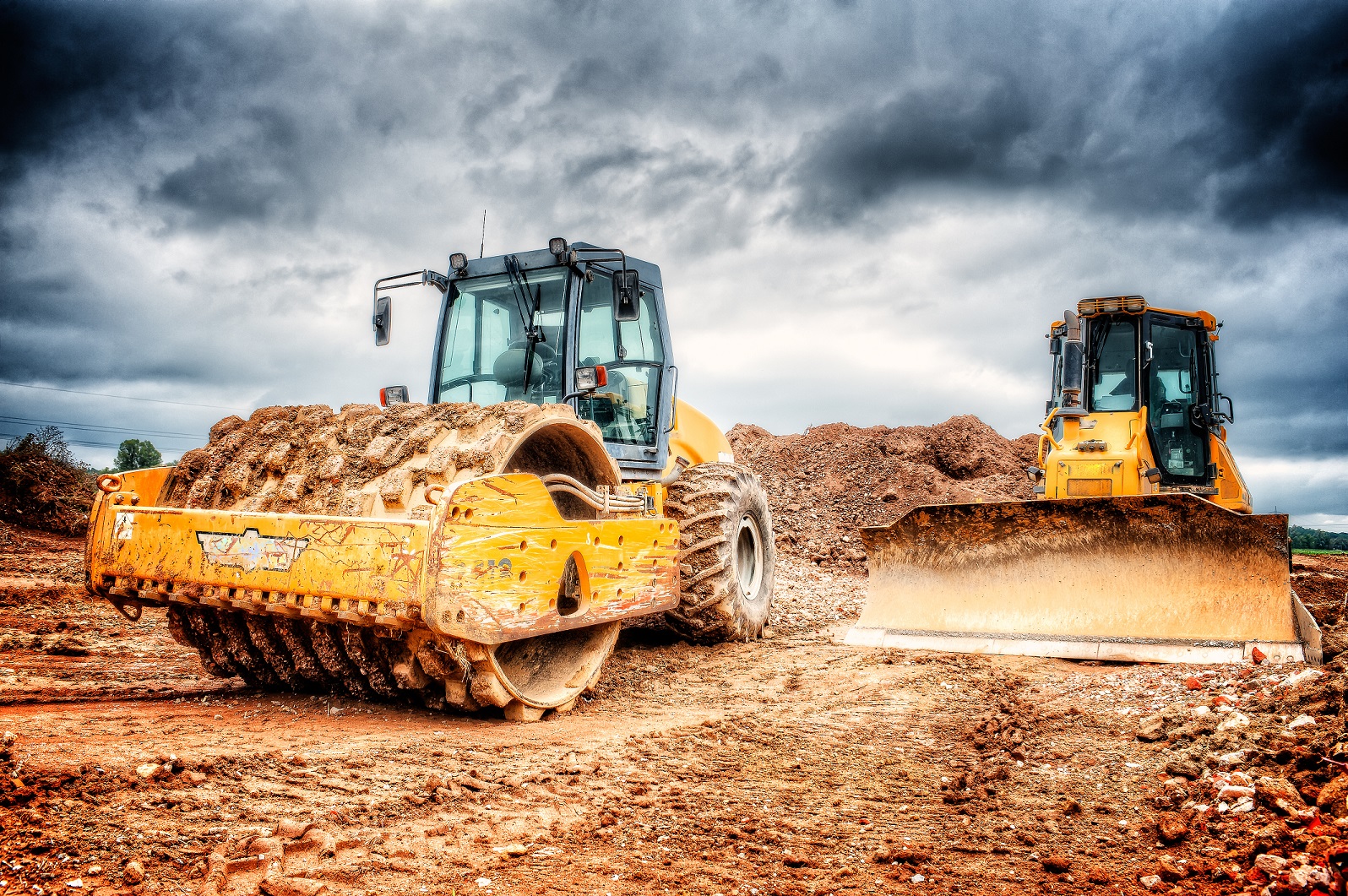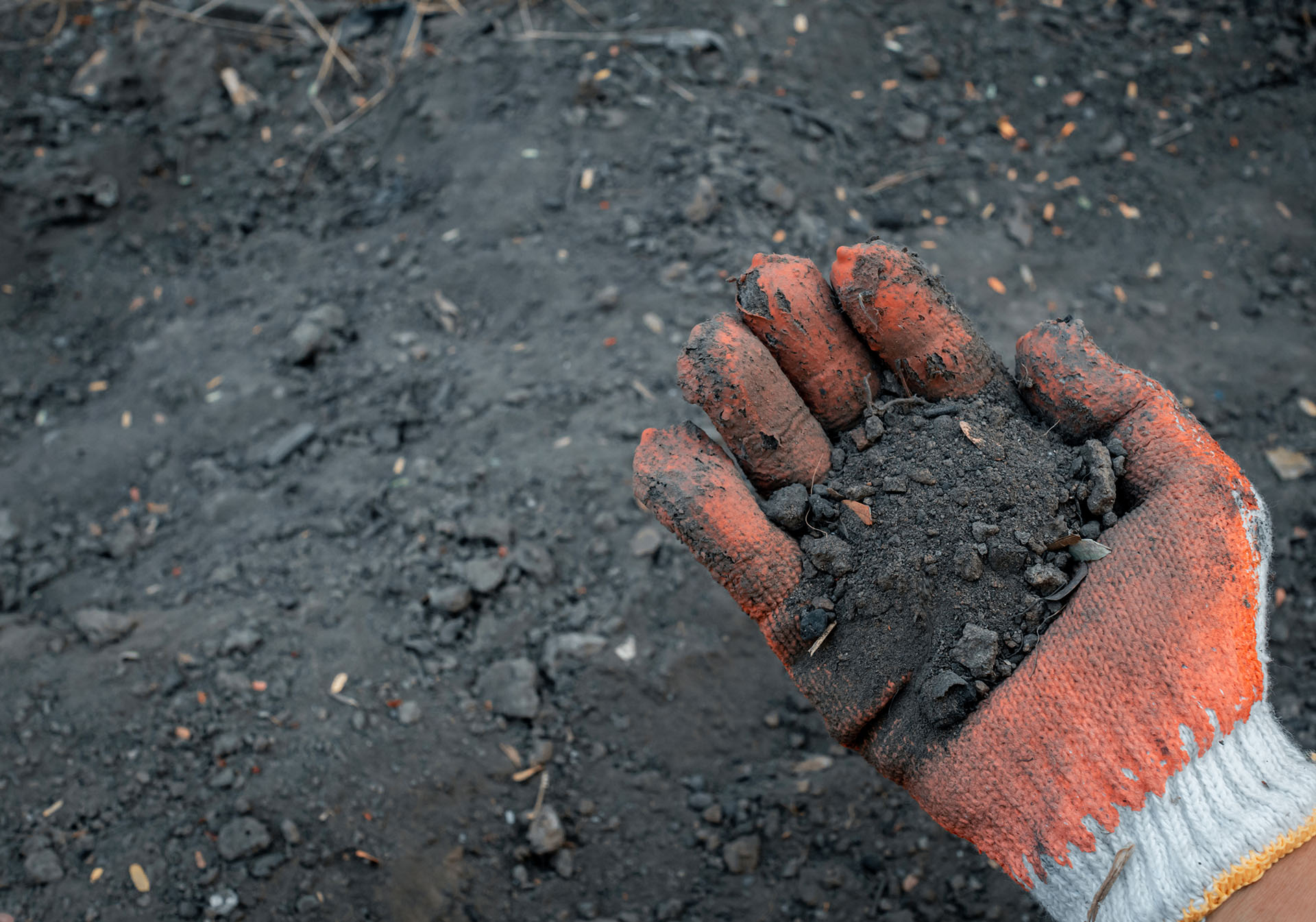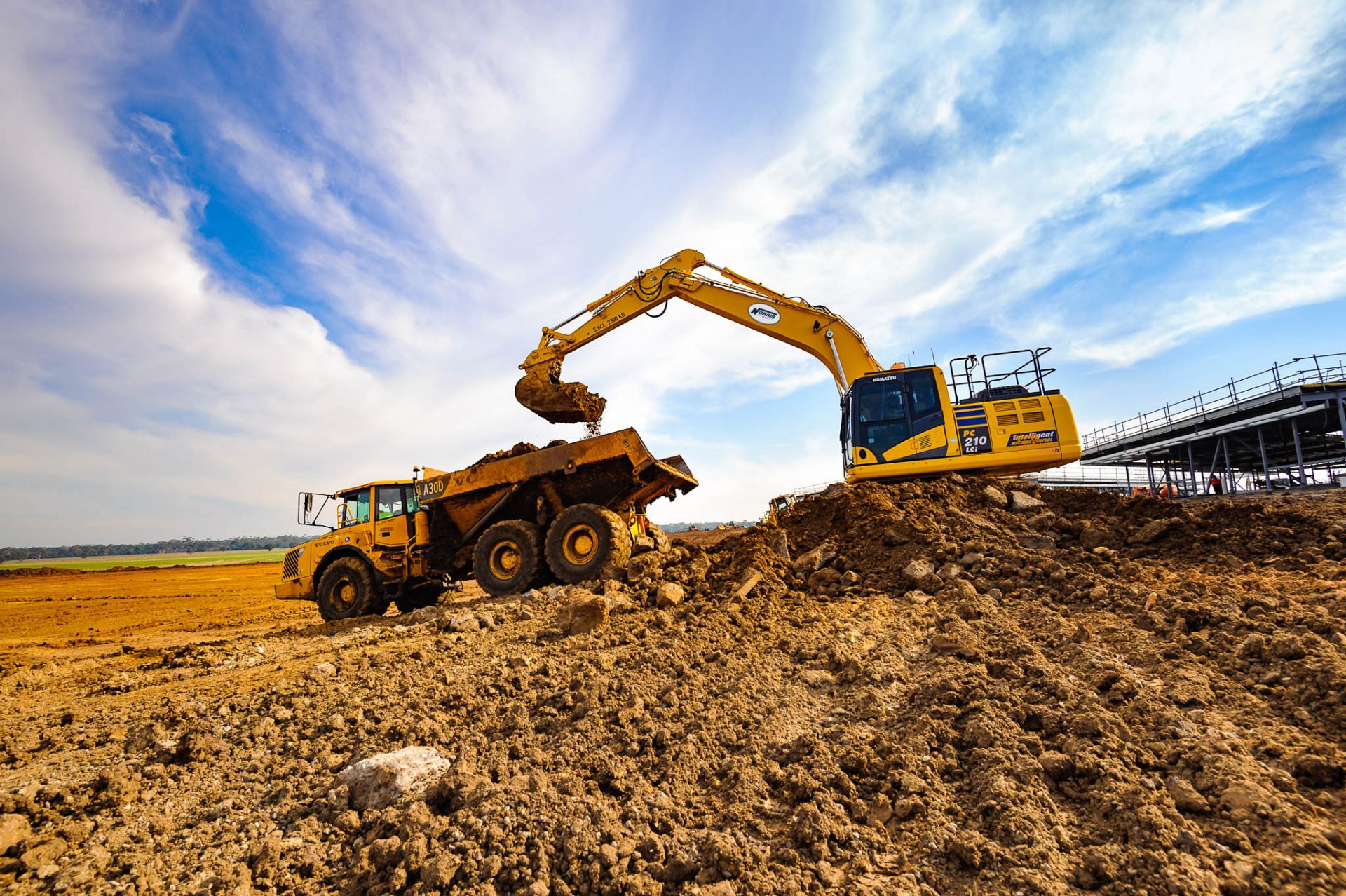Every construction project begins as a blank slate of land ready to be developed, but sometimes that’s easier said than done, especially when the terrain is very steep or rocky. Before concrete can be poured or steel beams erected, shovels must be put in the ground to prepare the site. Earthwork makes it possible to build roads and structures and ensures the final site meshes well with its surroundings. When you drive past an active construction site and see dump trucks and bulldozers ploughing around or carrying massive piles of soil and rock, they are working on grading the land to its final condition and making sure everything on the plans can be built correctly and safely.
Earthwork is a crucial part of every construction project. Without it, foundations might not safely carry the weight of their loads or stormwater may rush off and cause flooding and erosion. We’ll do our best to answer some of the most common earthwork questions and shed some light on the process of excavation and grading.
Earth Work FAQs
Earth Works
What is the difference between earthwork and excavation?
Earthwork is a more all-encompassing term that can relate to many different engineering and construction applications. Some applications that fall under the umbrella of earthwork but are not strictly excavating are landscaping, dam building, land grading and slope or embankment construction. Excavation is the act of removing soil for the purpose of building something else in its place. Excavation is done to build roads and bridges, foundations, basements and drainage ponds and trenches.
What are earthwork activities?
Earthwork activities are the type of construction tasks required to prepare the site. Earthwork activities typically occur during preliminary and preparatory phases of construction projects to make it possible to build new structures, road or bridge. After using 3D modelling computer to evaluate the limits of cut and fill and prepare a final grading plan, the construction team will attack the site with their earthmoving equipment to move soil and rock as required to achieve the intended final condition.
What does earthwork mean in construction?
In construction, earthwork is the term the refers to the activities related to moving rock and soil between cut and fill areas to create the final terrain upon which buildings and road will be placed. There are different kinds of earthwork depending on whether soil is being removed to bring grade to a lower elevation or placed to raise it. The construction team uses different equipment to dig out soil and rock in cut areas and then places it in fill areas with rollers and other grading equipment to make a smooth surface that can support a building or serve as a roadway.

Bulk Earthworks
What is the need of earthwork?
Earth works are needed to prepare a site for its intended purpose. For example, when developing a parcel of land for a new dwelling, the owner must first level the site to create a suitable pad upon which to build their home. Earthwork moves around large quantities of soil and rock based on the grading and construction plans to modify the topography as the engineer sees fit. Cut and fill conditions describe whether or not soil is being added or removed to reach the target ground elevations.
What is earth construction work?
Earth construction work is required to help make a blank, raw piece of land into a suitable parcel for construction. Prior to building a structure or road, earthwork must be done to excavate down to build foundations or level the ground surface to create a suitable, level driving surface. Earth construction work also involves landscaping and making sure the site has good drainage to prevent stormwater runoff and flooding and is not subject to erosion in severe weather conditions.
What is the rate of earthwork excavation?
The rate for bulk earthworks varies widely across different projects. The rate for earthwork excavation is driven by in-situ soil characteristics and the presence of rock. It is much more expensive to remove rock, especially if blasting is required. Excavation cost also depends on the size of the crew working on the project and the type of equipment they are using. These same factors also drive the amount of excavation that can be done per day.

Large Quantities of Soil
How is earthwork excavation quantity calculated?
Earthwork excavation quantities are measured by the volume of soil removed. This is never an exact amount, as it is difficult to know exactly how excavation will be performed down to the millimetre. However, engineers and construction teams can estimate the soil volumes being excavated based on reading the surveyed topographic surface and comparing existing ground contours to the final grading plan. Computer software that allows for 3D modelling helps improve the accuracy of the estimation of excavation quantities, but the final quantity will be dependent on the methods chosen by the earthwork contractor.
Is earthwork an excavation code?
In Australia, there are codes that govern how excavation is performed in the field. These codes are important to keep workers safe because excavation is a higher-risk construction activity. Open cut excavations are prone to caving in, especially if made too steep. It is important to evaluate soil conditions on the construction site because that will govern the methods of excavation and earthworks. PredictSite makes it possible to quickly evaluate site conditions and classification and proceed safely with excavation.
Projects
What is earth work in civil engineering?
Prior to construction, civil engineers will evaluate the existing contours and topography on a project site and determine the limits of cut and fill on the site as well as the final grading plan. The civil engineer will use their expertise to develop proposed grading conditions that will resist erosion and manage stormwater runoff well. Earthwork is a key part of the final engineered site plan, and could include drainage trenches and swales to convey stormwater away from structures. The engineer’s erosion control plan will outline specifications for landscaping the site to prevent soil runoff.
Cut and Fill
What is bulk excavation in construction?
Bulk excavation is the removal of large quantities of soil and rock to prepare a construction site for a project like a bridge, highway, office building or home. The construction team will use heavy equipment like dump trucks, bulldozers and rollers to move earth materials and lower the land to a specified elevation. The soil and rock removed from one area of the construction site may be reused in areas where filling is necessary. Waste materials will be trucked away from the site, but the goal should be to have as little waste soil as possible because it is expensive to haul huge volumes of soil off premises.
How do you calculate earthwork in a filling?
The amount of earthwork in filling areas on construction projects is calculated using the average areas to be filled in cross sections cut at regular intervals or evaluating surface area to be filled and determining the average depth to be filled based on finished grade elevations read from the grading plan. The amount of soil that must be placed is determined based on the moisture content of the soil and the level of compaction required. Working with an experienced civil engineer and construction team will allow you to determine how much earth material will be required when filling an area.

PredictSite has emerged as a leading resource for homebuilders, developers and construction firms in East and South Australia who need fast, accurate and easy-to-read soil and site classifications. With PredictSite, you are able to eliminate guesswork when it comes to preparing for your earthwork project and get to work quickly with confidence.
Over 130,000 sites have already been classified using PredictSite’s algorithm, and more are being added every day. Make decisions and estimates faster by relying on this cutting-edge platform and keep your earthwork construction tasks moving along ahead of schedule.
